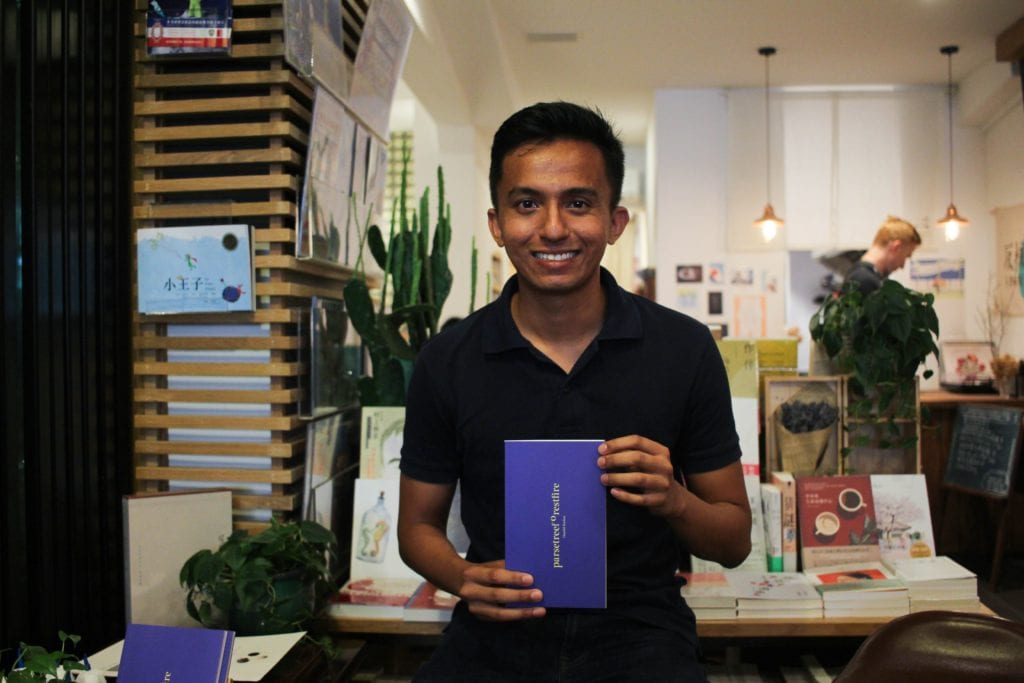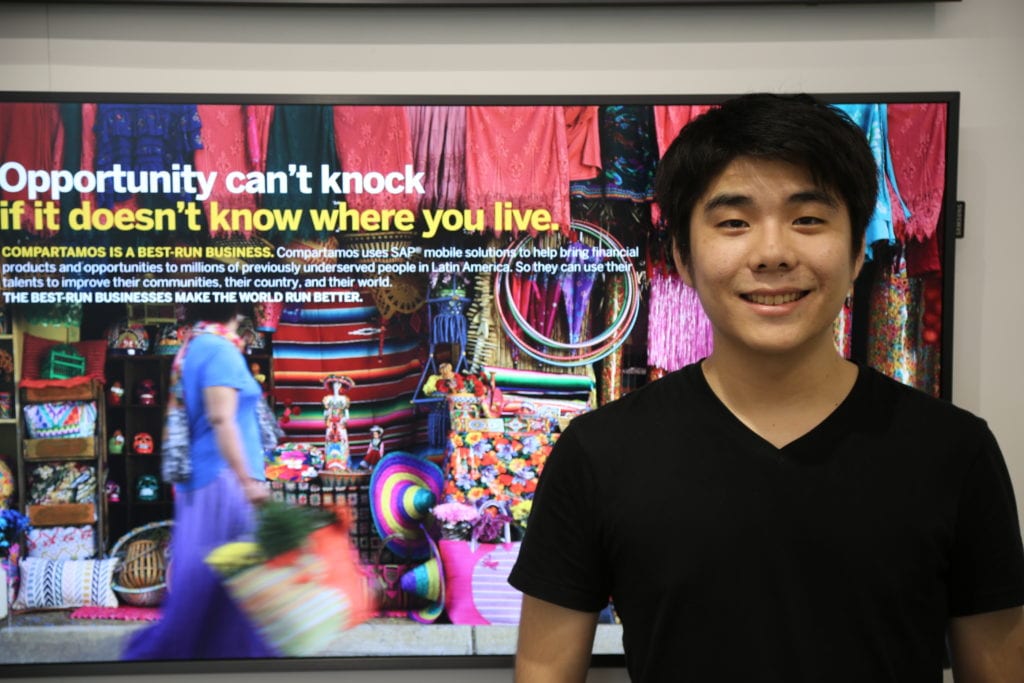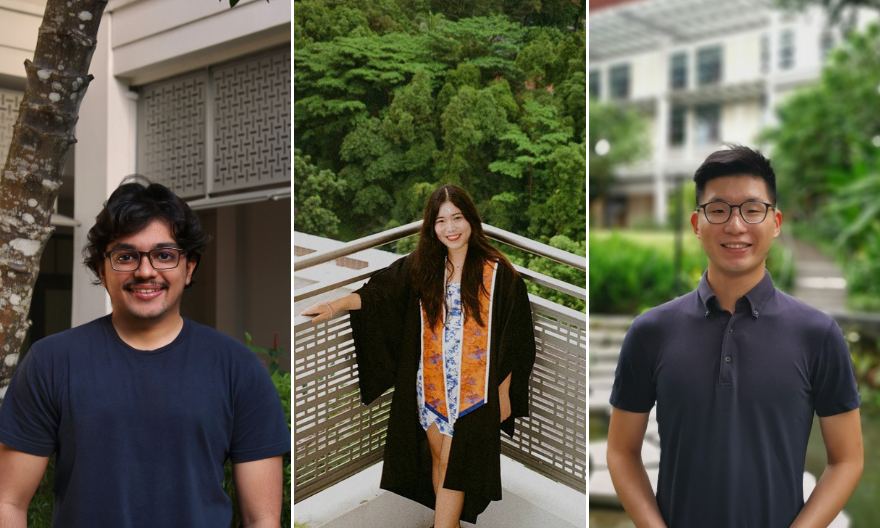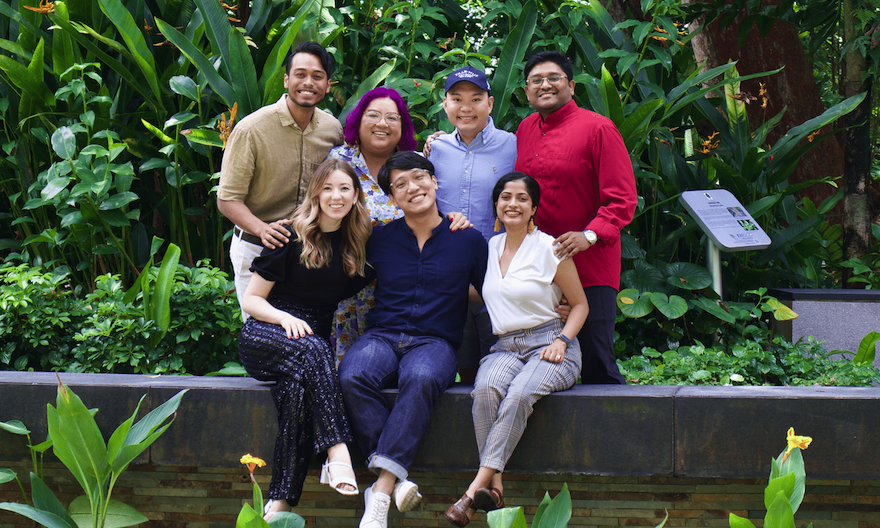Volume One: Yale-NUS alumni become first-time publishers of books on poetry and machine learning
By Kevin Low
“What is this speaking, who does it, why and how is this spoken?” This is how Mr Abdul Hamid bin Roslan (Class of 2017) would introduce his book to new readers. “This is a question whose tail eludes me. I have no answers.”
Mr Hamid’s debut book of poetry, parsetreeforestfire, was launched in July. Published by Ethos Books, parsetreeforestfire features a collection of poems written in Singlish, side by side with their English “translations” – in the loosest sense of the word – that contrast and juxtapose their Singlish counterparts. The book’s cover was designed by Ms Natalie Tan (Class of 2017), and Ms Teo Xiao Ting (Class of 2018), who was interning at Ethos Books, assisted in the process of producing the book.
Mr Hamid is not keen to explain what his poems are about. He prefers that readers engage with the works themselves: “My hope for this book is that it will tell you more about yourself than about me.” An overarching theme, however, is the interrogation of language: each of the collection’s four eponymous sections – “parse”, “tree”, “forest”, and “fire” – features a different approach to question the nature of language.
To Mr Hamid, the languages you speak are “kind of conditional”. He spoke about a woman he met whose parents were from India, but who had not grown up in the country herself, so she could not speak her own vernacular language. “To me, that was so fascinating, because as a pure product of circumstance, the kinds of languages she did end up speaking had nothing to do with what you might assume to be her ‘origin’,” he said. “And so there is no particular reason why I should be privileging one language over another.”
 “I think there are better ways to talk about ourselves than merely through what other people say about us.” Image provided by Mr Abdul Hamid bin Roslan and Ethos Books.
“I think there are better ways to talk about ourselves than merely through what other people say about us.” Image provided by Mr Abdul Hamid bin Roslan and Ethos Books.
According to Mr Hamid, who has a full-time job with the National Arts Council, the book emerged “from the ether of emails sent and received after ‘office hours’ and the work done on my own laptop after other work was done on another laptop.” The writing process was difficult, he said. Sometimes, it was all-consuming, and he would spend entire weekends on the book and neglect everything else; and there were times where the book “was utterly silent, and I could not find my way back into the book”.
His favourite moment was just before the book launch, when he held the book in his hands for the first time. “Up to that point, everything was email exchanges and file attachments,” he said. “So it was rewarding to finally see and touch what my publisher and I had been working on for many months. It felt real.”
On the subject of future projects, Mr Hamid said that he is currently working on another book-length project, but is as yet unsure about what the shape of project will be. “I’m choosing to take my time to let it unfold, and to follow its line of inquiry without anticipating the end result,” he said. “I’m also learning German now, to see what would happen if I completely stopped speaking and writing in English.”
Another alumnus who published recently was Mr Sean Saito (Class of 2017), whose textbook on machine learning titled Python Reinforcement Learning Projects: Eight hands-on projects exploring reinforcement learning algorithms using TensorFlow was published in 2018. Mr Saito is a co-author on the textbook, along with two of his colleagues at the Singapore office of SAP SE, a corporation that makes enterprise software for organisations and businesses.
“I’ve always had an interest in reinforcement learning and had learned most of the basics on my own,” said Mr Saito. “I was also fairly up to date with the latest algorithms in the field. So when two of my colleagues, both of whom had prior publishing experience, invited me to co-author this textbook, I took up the challenge very excitedly.”
Reinforcement learning is a growing subfield of machine learning, where algorithms are designed to learn to make decisions within in a certain predefined environment. “This could include things like balancing virtual poles, playing Atari games, or planning many moves ahead in the game of Go,” Mr Saito explained. The textbook he co-authored is a beginner’s introduction to the topic, guiding interested students with case studies and do-it-yourself exercises in writing their own machine learning algorithms.
Mr Saito dedicated 10 hours every weekend to the project for seven months, including research, writing, and testing the code he had written to accompany the teaching material. Before starting a chapter, he would make a reading list of relevant papers and meticulously read each one until he could confidently explain the relevant concepts to his co-authors. “Each chapter is split into a theoretical introduction to a particular algorithm, followed by its practical application,” he said. “Both parts have to be clear and concise, so I needed to have a deep understanding of each algorithm and theoretical concept before even writing the first word.”
 “On paper, I’m nowhere near qualified to have written this book. But that shouldn’t prevent you from doing anything.” Image provided by Mr Sean Saito.
“On paper, I’m nowhere near qualified to have written this book. But that shouldn’t prevent you from doing anything.” Image provided by Mr Sean Saito.
When asked if he found the process of writing a textbook difficult, Mr Saito said that it was quite different from writing papers in college – though both presented their own challenges. “A college paper can be good enough if it satisfies two people: the student and their professor – both of whom have access to each other and can improve on the drafts with each iteration,” he said. “A textbook aims to satisfy an unspecified number of people within a target audience, so I had to think a lot about what our readers expect from a book like this, without the same kind of direct feedback I’d get from a professor.”
From the desert of hard work and effort, Mr Saito pointed to several oases of high moments: his excitement at the prospect of the project, the accomplishment he felt after finishing his first chapter, and seeing the cover of the book for the first time with his name on it. “Oh, and anytime I managed to get a large chunk of code to work,” he added, laughing. “I just feel relieved that the book is done.”
Mr Saito said that he has already received several offers to write about other topics, but is not currently planning to contribute to another book. “I’m very glad I took up the challenge to write my first book,” he said, “and hopefully I will do even better if I ever write another.”





